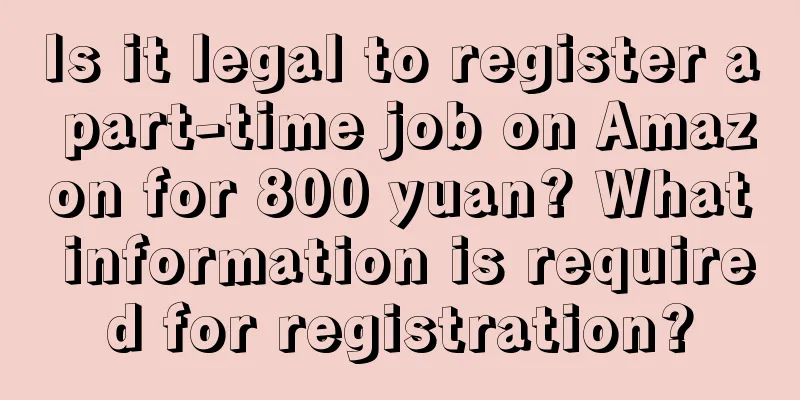Behind the popularity of 3.5-point restaurants: How are fake high-scoring businesses created?

Liu Jing is the manager of a Hunan restaurant in Beijing. One of her important tasks now is to observe the needs of each table of customers. If a customer needs to order drinks or dishes during the meal, it is the best time for her to promote the "write a review and get free peripheral products" activity. She will tell customers: if they give the restaurant five stars on the platform and write a short review, they can get some desserts and ice powder products in the store for free. The Hunan restaurant where Liu Jing works has a score of 4.8 on Dianping.com. In addition to maintaining a high score, she is more worried about customers giving it low scores. "If a customer gives 3.5 stars, that's a low score for the restaurant. If it happens once, I will be deducted 300 yuan," Liu Jing told Tech Planet. For catering companies, ratings are an important part of online operations. A high rating usually means that the restaurant has a higher weight on the platform, especially for restaurants in shopping malls and popular tourist cities, which is also one of the key factors affecting customers' dining decisions. However, the other side of the coin is that young people are now brave enough to venture into low-rated restaurants with a score of 3.5. After being "made famous" by some restaurants with high customer prices and poor taste, they have experienced dishes that exceeded their expectations in low-rated restaurants with low prices and no exquisite decorations, and have been spreading the word to recommend them. Topics such as "Young people are retaliating by crowding into 3.5-point restaurants" and "Restaurants with low ratings may be more delicious" have repeatedly become hot searches on social platforms. Behind this is a collective resistance by young people who are more rational in their consumption against restaurants with fake high ratings. 01 100,000 yuan to motivate employees and promote free meals, how hard does the restaurant work to raise its ratingsThe methods used by catering companies to improve their ratings are very inward-looking. Gao Lei, who runs hot pot, Western food and other catering businesses in Nanjing, has a deep understanding of this. Catering companies can usually improve their online store operations through third-party agencies or by purchasing promotion fees from official platforms. Gao Lei told Tech Planet that the problem they generally face is that they can only achieve short-term traffic increases and have to regularly launch low-priced packages or participate in some promotional activities. For example, he once paid 1,500 yuan per day for promotion, which cost 45,000 yuan a month. The effect was obvious in the short term, with customer flow increasing by 30% to 50% and store scores rising rapidly, but after half a month, there was no effect. "Spending money to buy traffic is a mystery," Gao Lei believes. For catering companies, this is like "drinking poison to quench thirst" and it is difficult to last long. The common method used by restaurants now is to visit customers before, during and after meals, but this requires selecting smarter employees or employees with higher ranks to do this. Gao Lei emphasized that this is because restaurant ratings depend on multiple dimensions such as taste, service, environment, and price. If customers are disgusted, it will backfire. For example, when customers want to order a drink, employees remind them that they can get a free drink by adding a bookmark or commenting on the restaurant. Usually, there is little chance of being rejected. Another form is free meals. Users like V7 and V8 of Dianping are frequent users who win free meals, and they are also the target of catering companies competing for cooperation. After upgrading to V7 this year, Zhang Yue received many invitations for cooperation from businesses. These businesses are mainly chain catering companies, including McDonald's, which has nearly 10,000 stores. If the distance is far, the catering company will promise to reimburse the car fare. Some catering companies in popular tourist cities are even more inward-looking and will give the influencer an extra red envelope. Zhang Yue was once invited to a newly opened McDonald's restaurant to eat a free meal and then write a review. The store manager who invited him said that the store would have an assessment at the end of the month and would be fined if the standards were not met. It is worth noting that these catering companies cannot explicitly say they give good reviews, they can only say they give comments, because once the word "good reviews" appears, it is expressly prohibited by the platform. As long as users complain, the catering companies will be punished. Compared with V7 and V8 users, restaurant explorers are more popular now. Zhang Yue said, "A top restaurant explorer can make a restaurant popular." While some restaurants are racking their brains to improve their scores, others are focusing on deleting negative reviews. A user who has had this experience many times told Tech Planet that this usually happens in large chain restaurants with a score of 4.8 to 5.0. The store staff will call frequently, usually saying that if the reviews cannot be deleted, the employees will have their wages deducted, which makes him feel embarrassed. In terms of rating operation management, catering companies will set up different reward and punishment measures. Gao Lei’s store set a bonus of 500 yuan for all employees if there are no bad reviews (2.5 stars or less) in the store that month. If there is a bad review, the employee will find the customer to explain the final change, and the bonus is 200 yuan. Gao Lei revealed that the cost of each store is between 15,000 and 20,000 yuan per month, and the annual investment is about 120,000 yuan. Compared with blindly imposing fines, Gao Lei believes that the reward mechanism can better motivate employees to improve the restaurant's rating. 02 Revengeful check-in, young people crowded into 3.5-point restaurantsIt's not that 5-star restaurants are unaffordable, but 3.5-star restaurants are more cost-effective. The owners who have worked hard to run high-scoring restaurants probably didn't expect that this generation of young people would start to check in at low-scoring restaurants in retaliation. The emergence of 3.5-star restaurants has also brought Chen Xiaoqing, the director of A Bite of China, back into the spotlight. He once mentioned in a talk show that some restaurants with good taste usually have a score of 3.5 to 4. According to a restaurant owner who spoke to Tech Planet, after a restaurant opens an online store, its basic score is generally 3.5 points, unless there are bad reviews, which will cause the restaurant's score to drop. If there is no online operation, it will remain at 3.5 points. Tian Tian is a senior food lover and a Dianping V7 user. In her experience, 3.5 is just an average. Many restaurants with good food that she often went to in the past did not score 4 points. These restaurants are generally 3-5 years old. They already have a stable customer base and a high repurchase rate. The restaurant owners are probably not good at operating online rating systems and have not even entered the online platform. In addition, there are some more distinctive private dishes, such as some Chinese izakayas, which pursue all-round quality and taste good, but are generally expensive and have low user ratings. However, behind the high premium, users are actually paying for the restaurant environment and service. A restaurant owner with a store score of 3.8 told Tech Planet that after the new store opened this year, many operation teams approached her for cooperation, but she rejected them all. At present, the store mainly relies on some loyal old customers to obtain stable income. She said that the restaurant rating operation is determined by multiple dimensions, such as the density of customer reviews. It is not that if 10 people give 5 points, the average score is 5 points. If there are few people, the score will also be low. In addition, the store must regularly offer some super low discount packages, otherwise the score will also be low. In fact, the reason behind the sudden popularity of low-scoring restaurants is that in the past two years, many internet celebrities have been exploring low-priced restaurants. They have attracted more traffic and attention by visiting low-priced restaurants. Whether the ending of the video is the contrast brought by "delicious" or the complaints from netizens due to "stepping on a landmine", it helps increase the click-through rate of the blogger's video. In addition, in popular tourist cities and county towns, high-scoring restaurants are no longer the primary factor in users' dining decisions. Take Zhejiang, where Tian Tian is located, for example. Many seafood food stall owners use the crazy free meal format to quickly improve their store scores and attract foreign tourists. "But in fact, many of the seafood used by these restaurant owners are unknown to us locals. They invite some foreign chefs to make some dishes that locals can't understand," Tian Tian said. The most authentic local food is often not in the so-called high-scoring restaurants, but hidden in the streets and alleys. Many county restaurants do not pay much attention to rating operations. Wang Yong, the owner of a county restaurant, told Tech Planet, "Compared with first- and second-tier cities, county towns are actually small places. You can drive around the city two or three times in a short time. The locals know which restaurants are delicious and which are not. Taste and affordability are enough." In the past, restaurant owners in county towns would invite many big-V users to improve their ratings by offering free meals, but the effect was average and it almost never happens again. Wang Yong introduced that because users in the sinking market like to watch short videos, what is now popular in county town restaurant marketing is that a new store will open with a batch of more than 100 store explorers. The goal is to allow all users in the county to find the restaurant under the algorithm mechanism of local recommendation. 03 Are restaurant ratings still trustworthy?The popularity of the 3.5-point restaurant has once again sparked a discussion about the credibility of the restaurant rating system. On the one hand, there are indeed some restaurants with inflated ratings, and it is difficult to distinguish between real and fake restaurant exploration videos, which frequently cause users to "step on thunder". In particular, when users participate in activities such as cashback for good reviews or write reviews to participate in in-store lucky draws, they will naturally begin to doubt the authenticity of high ratings. As a senior food lover, Tian Tian has summed up a lot of experience. Usually, if a new store suddenly attracts a lot of people and the screen is full of comments, it is likely that the business has spent money on organized promotion. When selecting restaurants, she never looks at any indicators roughly, but reads the comments and pictures one by one. "I can now tell which are promotional pictures and which are stolen pictures at a glance. For example, repeated text, the angle of the picture is exactly the same, and the picture pixels have been compressed and blurred." In the opinion of restaurant owner Gao Lei, good wine needs to be hidden in a remote alley. Some restaurants in remote locations and restaurants in shopping malls still rely heavily on ratings to attract consumers. Many restaurants with a 5.0 score are basically located in business districts, with an average consumption of more than 400 yuan per person. It is not because of the good taste of the dishes, but because of the high-end decoration, the dining environment and service concept. However, the needs of consumers are changing. They are more rational and more concerned about cost performance. In particular, young people are now launching a wave of reverse consumption. In the consumption process, they no longer blindly pursue high-priced goods such as famous brands and luxury goods, but pay more attention to the practicality of the goods themselves. The same is true in the catering scene. Gao Lei said that because open flames are not allowed in shopping malls, many high-scoring restaurants actually have pre-prepared dishes, and users are likely to complain that they spend a high price but the dishes taste mediocre. In contrast, some affordable restaurants have chefs cooking fresh food in the back of the house, and the main feature is that the food is delicious and affordable. However, restaurants with a score of 3.5 are more like a treasure hunt, which only exists in a few catering companies. As one netizen said on a social platform, "I don't recommend trying restaurants with a score below 3.5, just like TV dramas with a score of 6.5 on Douban, sometimes there are some niche good films hidden, but those with a score of 3 on Douban must be terrible." (Note: All names in this article are pseudonyms.) Author: Lin Jing WeChat public account: Tech Planet |
<<: Pinduoduo's core gameplay in 2024: Multiple links for the same product
>>: Why do people need village night
Recommend
10 essential models for Xiaohongshu in 2023
The latest data shows that Xiaohongshu currently h...
What does cross-border e-commerce agency operation do? What does it include?
Nowadays, we often hear people mention cross-borde...
How many Wish accounts can one person register? What should I do if my Wish account is linked?
Wish is a relatively well-developed cross-border e...
Where can I find Shopee's newbie tasks? What are the newbie tasks?
Shopee, like Amazon, is a cross-border e-commerce ...
What should I do if shein does not know how to register? Introduction to the registration review process
With the rise of cross-border e-commerce, Shein ha...
The video of sending red envelopes received tens of millions of likes. Why did "CC Yuhan" unexpectedly become popular?
A generous young aunt, a powerful "sister-in-...
Does Shopee's transshipment warehouse need to be changed frequently? What should I pay attention to?
No matter what platform it is, since you open a st...
What is the difference between Shopline and Shopify? What is SHOPLINE?
There are many merchants doing cross-border e-comm...
User: Brand innovation point
Only by understanding the logic and principles beh...
How to compress images after uploading them to Amazon? How to optimize images?
On the Amazon platform, high-quality product image...
Introduction to employment directions and prospects of cross-border e-commerce. How is the development of cross-border e-commerce?
The current development of cross-border e-commerce...
How to search for other people’s stores on Amazon? How to operate it well?
Therefore, as the Amazon platform continues to gro...
Female talk show actresses collectively "break the circle": Will "female topics" become a new hot track?
With the popularity of programs such as "Talk...
I observed 30 brands with a sales volume of 10 million yuan on Xiaohongshu and summarized the following...
In this era of information explosion, AI and data ...
Looking at Double 11 from the list: What happened in the past three years?
Every time a big promotion ends, the rankings alwa...









